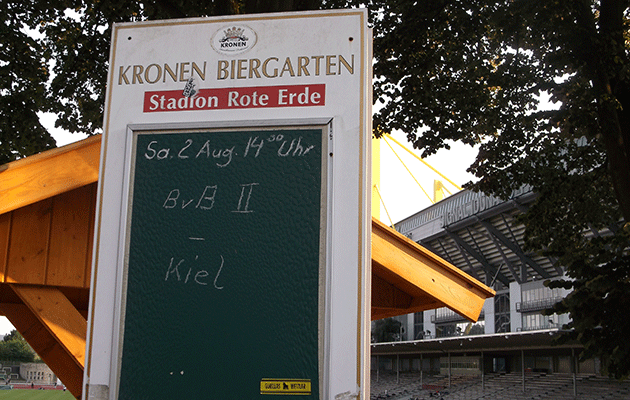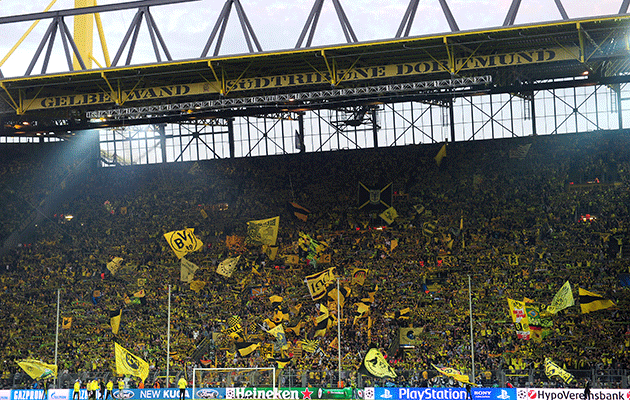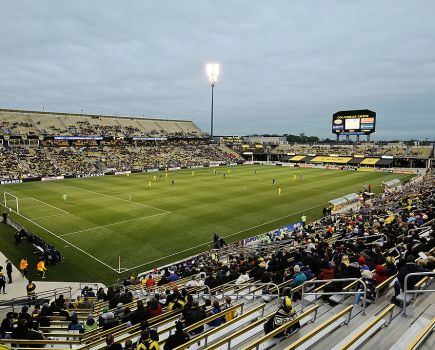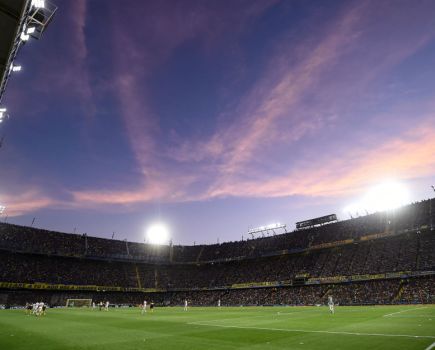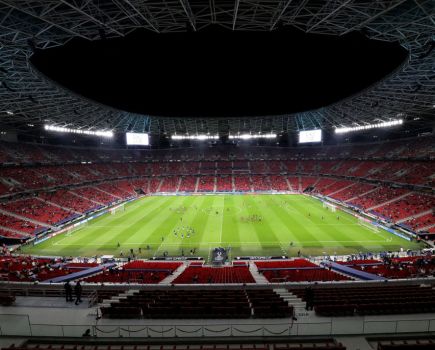Dortmund is one of 150 soccer cities featured in Libero, the digital travel guide for football fans. Regularly refreshed with new destinations and travelogues, Libero is a one-click treasure trove of football trip tips, tales and trivia. See www.liberoguide.com/dortmund.

Signal Iduna Park: Borussia Dortmund v Schalke 04, Bundesliga, Sunday Nov 8/1530 CET-1430 UK time
Dortmund is built on beer and football. Set in Germany’s industrial Ruhrgebiet, with a compact and pedestrianised centre, Dortmund is very much a one-club city – and that one club, Borussia, attracts the highest average attendance in the world game.
This is where you find, and hear, the Yellow Wall, famously comprised of 25,000 gathered on football’s largest remaining standing terrace, the Südtribune of the 81,645-capacity Signal Iduna Park.
And the day of the Revierderby with local rivals Schalke 04 is when you hear the Wall in full wail.
Still commonly known as the Westfalenstadion, the arena is the biggest football stadium in Germany, no mean feat. Behind it, still operating as the club’s reserve-team ground, is the BVB’s previous home of the Rote Erde.
Opened as part of the Volkspark communal sports complex in 1926, the ‘Red Earth’ hosted mainly athletics meets before Borussia moved there in 1937. Previously, the club had been based at the Weisse Wiese on Wambeler Strasse, near Borsigplatz, BVB’s spiritual home north-east of town where you’ll still find bars decked out in yellow-and-black memorabilia.
Relocating to the Rote Erde south of the city centre, Borussia began to enjoy considerable post-war success. First came the team spearheaded by the Three Alfredos – in actual fact, three Alfreds, Preißler, Kelbassa and Niepieklo. But BVB really took off in the mid-1960s. With Siggi Held, Reinhard ‘Stan’ Libuda and Lothar Emmerich, Borussia won league, cup and the Cup Winners’ Cup of 1966, the first German club to win a European trophy.
Holding a capacity 42,000, the Rote Erde was heaving on big nights, such as during the European Cup run of 1963-64 and high-profile games against Benfica, Dukla Prague and Internazionale.
A new stadium had long been proposed. In 1971, Cologne turned down the chance of being a venue for 1974 World Cup, so the opportunity, and the funds, passed to Dortmund. A football-specific stadium, right next door to the Rote Erde, was duly built: the Westfalenstadion.
First staging the Revierderby with Schalke04 that April, this 54,000-capacity ground hosted four games for the finals, including the de facto semi between Holland and Brazil.
By then, Borussia were wallowing in the second flight. After a lengthy dip in form, Borussia bounced back under Ottmar Hitzfeld to hit the top again in the 1990s. With a team of returnees from Serie A – Matthias Sammer, Andreas Moller, Jurgen Kohler – Dortmund won the Champions League in 1997.
Shortly afterwards, always packed the rafters, the Westfalenstadion increased capacity to 68,600, then 83,000. For the 2006 World Cup, architects Engels and Partners unveiled €35ml worth of improvements, including five video screens. Capacity fell back to an all-seated 65,000 – not that many would have been calmly sitting down during Germany’s epic semi-final with Italy, decided on two last-gasp goals from the visitors.
Thereafter, the stadium reverted back to its sponsored name of the Signal Iduna Park and capacity has slowly been creeping up, for domestic fixtures at least, ever since.
While the largest average attendance in Europe fills the famed Südtribune at one end, most of the Nord at the other, and West and Ost on the sidelines, away fans are allocated an upper corner of the Nordtribune.
On the ground
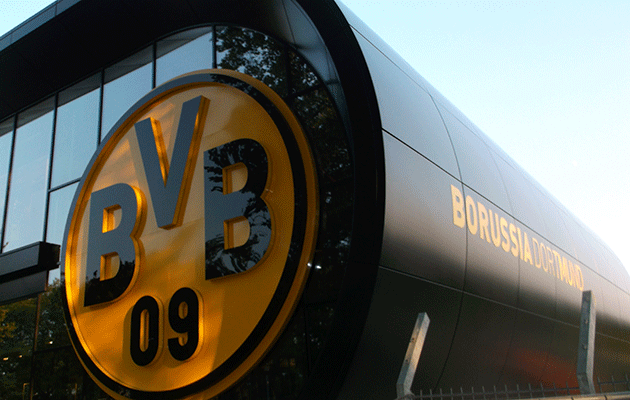
The stadium is south of town, a 25-minute walk from the centre down Hohe Straße. On match days, the nearby stop at Signal Iduna Park operates on the U45 line, which otherwise runs as far Westfalenhallen, ten minutes’ walk from the stadium ahead of you to your right. Exit left out of the train for Ausgang Süd, before walking past Rosenterrassen for Strobelallee.
Online ticket sales are dealt with by Eventim. You pick up tickets two hours before kick-off at the Hinterlegunskasse Nord on Strobelallee. There are six main categories, excluding the sold-out standing Stehplätze behind the goal. Affordable blue category 4 is close to the action in the corners, with yellow 5 and green 6 behind. The best seats are in the Osttribune. Five ‘Top-Spielen’ (including games with Bayern) are 20% dearer and limit the customer to two tickets only – otherwise, it’s four per person.
Also bear in mind that in 2014, Borussia Dortmund set up a scheme for weekend match packages with nearby hotels, comprising upscale accommodation, match tickets and various discounts and souvenirs thrown in. For details see en.best-travel.de/sports-football-travel/home-match-packages.html for details.

The two-storey BVB Fanshop (Mon-Sat 10am-6pm, match day Sun from 1pm, and 1hr after home games) in the gleaming August-Lenz-Haus on Strobelallee is awash with yellow-and-black souvenirs. In Dortmund’s main square of Markt, the Fanshop Krone (Mon-Fri 10am-7pm, Sat 10am-6pm) and adjacent Karstadt Sport both sell BVB merchandise.

The history of BVB is told at the excellent Borusseum (daily 10am-6pm, match days until kick-off; €6/under-18s €4, under 6s free). This detailed and visually entertaining history, in German only, starts with a replica of the pre-war bar Zum Wildschütz where Borussia were founded, moving onto original TV re-runs of vintage triumphs (note Libuda’s sublime winning lob of 1966) and many things to press, open, watch and listen to.

German-language stadium tours (€10/€7 under-18s) last 75mins and take place two or three times a day during the week, hourly 12.15pm-4.15pm at weekends, not match days. Tickets include entry into the Borusseum, where visitors should gather.

To the immediate left of the stadium as you look face on, Strobels, named after the architect who built the Rote Erder, is a party-minded bar/restaurant with an adjoining terrace. Alongside, the traditional Kronen Biergarten overlooks the Rote Erde pitch, offering beer from one hut and grilled sausages from another.
At the game, an army of vendors and multitude of kiosks dispense real beer and sausages.
